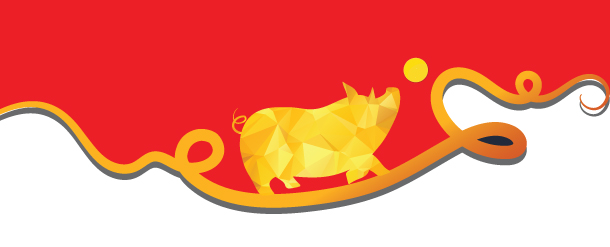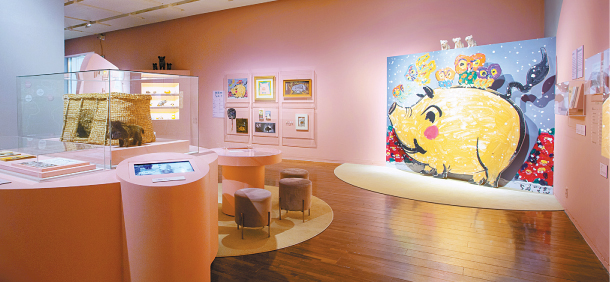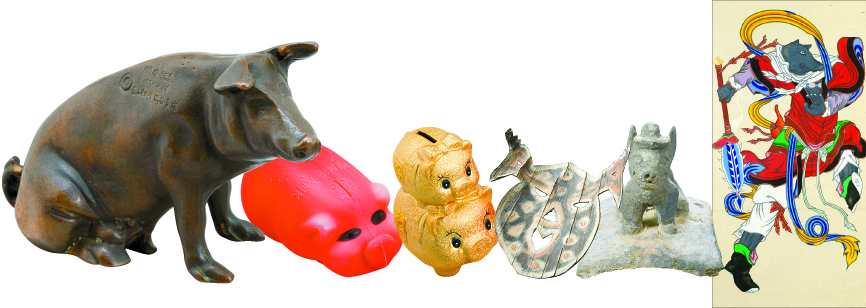A history of pigs that’s bigger than pork: Korea’s porcine friends have long represented fortune and prosperity

In Asian countries, however, pigs have long been viewed as a symbol of fortune, prosperity and wealth, explaining why people buy lottery tickets after they dream of pigs and so many piggy banks in countries like China and Korea are colored gold and embossed with a large Chinese character symbolizing “luck.”
In Korea, pigs are the key sacrificial animal during gut, or shamanism rites.
But how did pigs become a symbol of fortune and wealth?
The answer can be found at a recent exhibition that kicked off at the National Folk Museum of Korea in central Seoul. Titled “Joyous Pig,” the exhibit is the museum’s annual project to organize an exhibition at this time of the year focused on each zodiac animal. This year the exhibition is in its 13th year. It runs until March 1.

The National Folk Museum of Korea, central Seoul, kicked off an exhibition titled “Joyous Pig” to celebrate 2019, which will be the Year of the Golden Pig. The exhibition runs through March 1. [NATIONAL FOLK MUSEUM OF KOREA]
“In the Samgukyusa [a book about the legends and history of ancient Korea’s Three Kingdoms,] there are several stories that talk about how pigs led kings to discover geographically superior lands that they moved their capitals to,” said Kim. “The people of Goguryeo and Goryeo believed that pigs acted as a communicator between men and gods.”
The historic background of pigs can be understood in the first section of the exhibition, entitled “The Guardian of Mankind.”
In this section, many paintings and sculptures of pigs that were used as the “guardians” that protected neighborhoods or homes are on display. One of them includes the “Earthen statue of Zhu Bajie” from the Joseon Dynasty. Zhu Bajie is one of the three helpers of Tang Sanzang and a major character in the novel “Journey to the West.” Zhu means “swine”, and Bajie means “eight precepts.” This sculpture tile used to be one of 10 guardians on the wall of Daewoong Temple in Mirang, South Gyeongsang, during the late Joseon Dynasty, but is now part of a collection of Tongdosa Museum in Yangsan, also in South Gyeongsang.
The second section, “The Companion of our Ancestors,” attempts to show how the animals once kept people company, helping humans in many parts of their daily lives. Koreans often raised pigs in their backyards and the people of Jeju are especially well-known to have used pigsties as their toilets, feeding the pigs human excrement. The exhibit also explains that they were and still are “good companions” for providing delicious pork, which is one of Korea’s favorite meats today.

At the exhibition, some 70 artifacts - such as pig sculptures, left, earthen rooftiles, second from right, masks, center, and paintings, right, as well as modern items, such as piggy banks, second from left - are on display. [NATIONAL FOLK MUSEUM OF KOREA]
“After the liberation, many Koreans opened up small businesses like barber shops and junk shops, and to wish for prosperity and fortune, it was common for shop owners to hang up paintings of pigs,” said Ha. “The most popular painting was the one depicting a mother pig feeding many piglets. A pig, which symbolizes wealth, is known to give birth to many piglets at once so people believed it would bring a lot of fortune all at once.”
BY YIM SEUNG-HYE [sharon@joongang.co.kr]
The “Joyous Pig” exhibition, which kicked off on Dec. 19 at the National Folk Museum of Korea, will run through March 1. The exhibition is open to all and admission is free. The museum, which is located next to Gyeongbok Palace, is open every day from 9 a.m. to 5 p.m., and hours extend until 9 p.m. every last Wednesday of the month and weekends. For more information, call (02) 3704-3114 or visit www.nfm.go.kr.










with the Korea JoongAng Daily
To write comments, please log in to one of the accounts.
Standards Board Policy (0/250자)